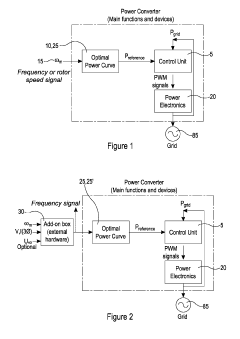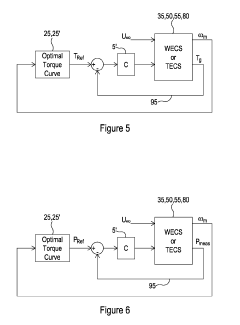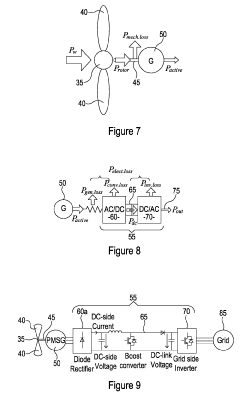Research on improving the conversion efficiency of new energy technologies - Eureka
New Energy Tech Background and Goals
Additionally, it is crucial to identify the major technical challenges and bottlenecks that currently hinder further advancements in conversion efficiency. This entails a thorough examination of the underlying scientific principles, engineering constraints, and practical limitations that need to be addressed through innovative solutions and research efforts.
Market Demand for Efficient Energy Conversion
- Growing Demand for Energy Efficiency
Rising energy costs and environmental concerns drive the need for efficient energy conversion technologies. Governments and industries seek solutions to reduce energy consumption and carbon footprint. - Expanding Renewable Energy Market
The global shift towards renewable energy sources, such as solar and wind power, creates a demand for efficient energy conversion systems to maximize the utilization of these resources. - Industrial and Commercial Applications
Energy-intensive industries, such as manufacturing, transportation, and commercial buildings, require efficient energy conversion technologies to optimize their operations and reduce operational costs. - Emerging Markets and Developing Economies
Developing countries with rapidly growing populations and industrialization are potential markets for efficient energy conversion technologies to meet their increasing energy demands sustainably.
Current State and Challenges in Energy Conversion
- Conversion Efficiency Limitations
Current energy conversion technologies face significant efficiency limitations due to inherent thermodynamic constraints and material properties. - Technological Bottlenecks
Key bottlenecks include heat transfer limitations, material degradation, and energy losses during conversion processes. - Geographical Distribution
Research efforts are concentrated in regions with strong renewable energy initiatives and supportive policies, such as Europe, North America, and parts of Asia.
Evolution of Energy Conversion Technologies

Existing Solutions for Energy Conversion Efficiency
01 High-efficiency energy conversion devices
Various technologies have been developed to improve the efficiency of energy conversion devices, such as solar cells, fuel cells, and thermal energy conversion systems. These devices aim to convert different forms of energy, such as solar, chemical, or thermal energy, into electrical or mechanical energy with high efficiency.- High-efficiency energy conversion devices: Improving efficiency of devices like solar cells, fuel cells, and thermal energy conversion systems to convert energy forms (solar, chemical, thermal) into electrical or mechanical energy with high efficiency.
- New energy conversion systems for vehicles: Innovative systems for efficient energy conversion in electric and hybrid vehicles, converting energy sources (batteries, fuel cells, thermal) into mechanical energy for propulsion, with energy recovery and storage mechanisms.
- Energy conversion for distributed power generation: Technologies for efficient conversion of energy sources (solar, wind, thermal) into electrical energy for distribution through local power grids or microgrids, with increasing adoption of distributed energy resources.
- Improving conversion efficiency of solar energy: Developing advanced solar cell materials, light-trapping techniques, and optimized system designs to enhance the conversion efficiency of solar energy into electrical energy, maximizing utilization of solar radiation.
- Energy efficiency evaluation and management: Methods for modeling, analyzing, and monitoring energy conversion processes, as well as systems for data monitoring and efficiency assessment, to effectively manage and optimize energy systems.
02 New energy vehicle power conversion systems
Efficient power conversion systems for new energy vehicles, converting energy from sources like batteries, fuel cells, or solar panels into usable power for propulsion and other vehicle systems, involving advanced power electronics and control strategies to maximize energy conversion efficiency.03 Energy efficiency evaluation and optimization methods
Various methods and systems for evaluating and optimizing the energy conversion efficiency of different technologies and systems, involving modeling, simulation, data analysis, and optimization algorithms to identify areas for improvement and implement efficiency-enhancing measures.04 Hybrid and integrated energy conversion systems
Technologies involving the integration of multiple energy conversion processes or sources into hybrid systems, aiming to leverage the advantages of different energy sources and conversion technologies to achieve higher overall efficiency and performance.05 Thermal energy conversion and utilization
Technologies focusing on the efficient conversion and utilization of thermal energy, such as waste heat recovery, solar thermal energy conversion, and thermal energy storage, aiming to harness and convert thermal energy into useful forms, such as electricity or heating/cooling, with improved efficiency.
Key Players in New Energy Sector
Samsung Electronics Co., Ltd.
Infineon Technologies Austria AG
Core Innovations in Energy Conversion Technologies
- Incorporating losses in the overall efficiency calculation: by considering the losses in the energy conversion device, the method takes into account the impact of these losses on the overall efficiency of the system. this allows for a more comprehensive determination of the parameter to be used for optimising the system.
- Global optimisation approach: unlike conventional approaches that focus solely on aerodynamic or hydrodynamic efficiency, this method introduces a global optimisation approach that considers both aerodynamic or hydrodynamic efficiency and losses. this allows for a more efficient determination of parameters for optimising the system.
- Reducing or minimising losses: by reducing or minimising the losses in the energy conversion device, the method aims to improve the efficiency of the system. this can be achieved by controlling or adjusting the resistant torque that opposes the rotational movement of the turbine, or by controlling the variable load connected in between the generator and the grid.










